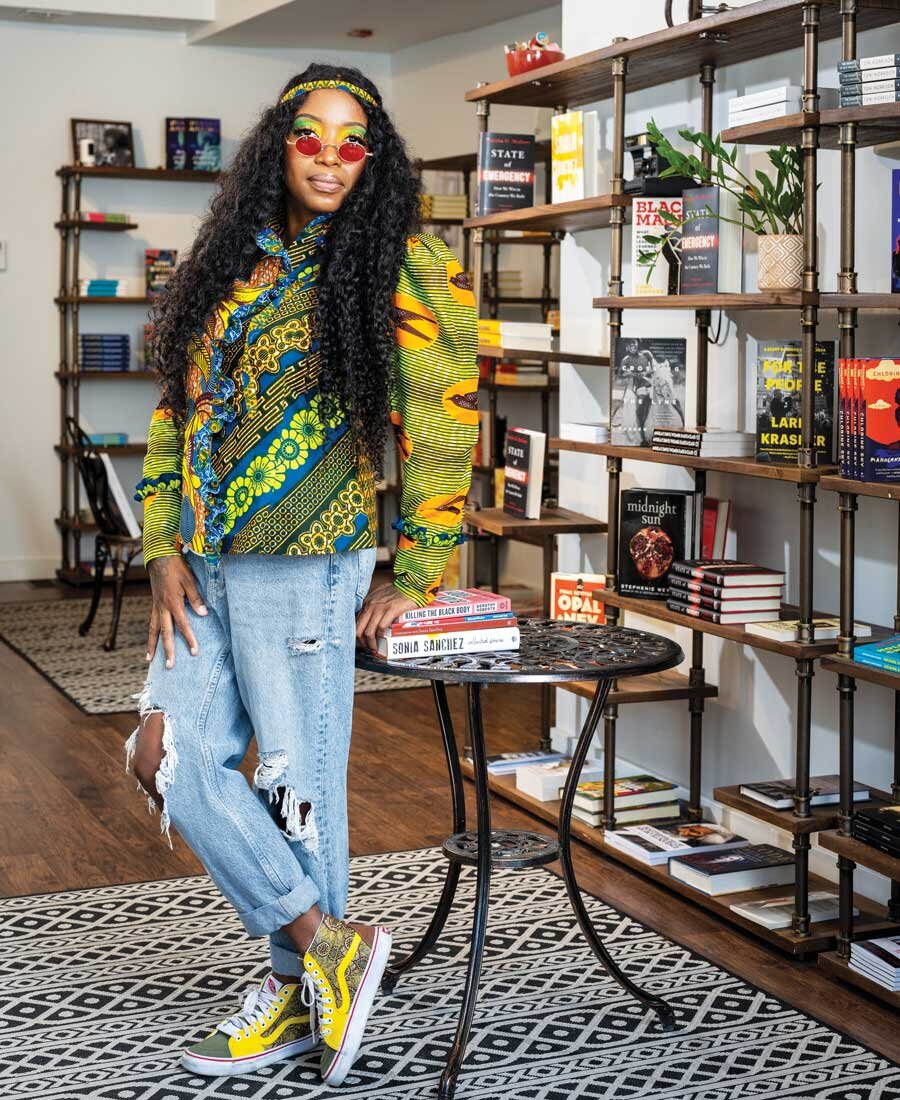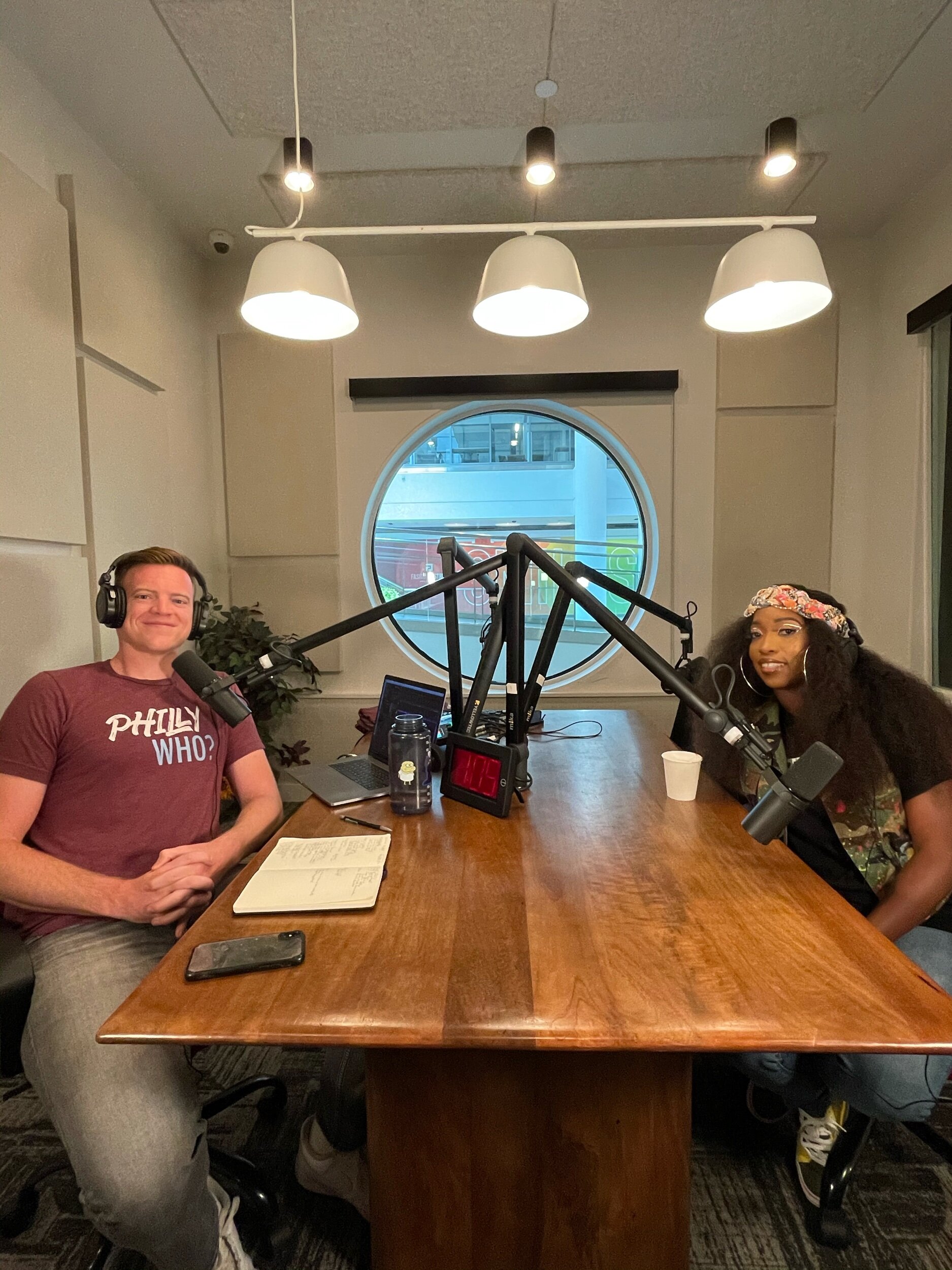“Are you Ida?,” a woman in a tie dye tee shirt and polka dot beanie poked her head into our bookshop one day before we had officially opened.
“No,” I smiled. “The bookshop is named for Ida Bell Wells Barnett. Not me.”
“Ida Bell who?” her forehead wrinkled.
“Wells Barnett.”
“Never heard of her,” she said looking around the near empty bookshop.
“Then we have homework to do,” I said handing her a copy of Ida, A Sword Among Lions.
According to Ida Bell Wells Barnett’s biographer, Paula Giddings, Ida Bell Wells Barnett solidified her work as a literary activist in the late 1800s because of three young Black gentlemen–Thomas Moss, Calvin McDowell, and Will Stewart.
These three gentlemen were the proud founders of the People's Grocery Store, a small coop in a neighborhood called The Curve. The People’s Grocery Store was a great success, so much so that it cut into the sales at another local White owned shop that once had a monopoly on Black and White customers alike. The growing tensions between the two stores led to a violent outburst between the races and as a result, those three gentlemen, Thomas Moss, Calvin McDowell, and Will Stewart were arrested unlawfully.
On Wednesday, March 9, at about 2:30 a.m. 75 men in Black masks surrounded the Shelby County Jail and nine entered. The feral group of White men dragged Thomas Moss, Will Stewart, and Calvin McDowell from their cells and brought them to a Chesapeake & Ohio Railroad where Moss had his hands and fingers shot off "inch by inch" until they were shot to pieces. Next the angry mob shot four holes into McDowell's face, each large enough for a fist to enter. His left eye was shot out and the ball hung over his cheek in shreds. His jaw was torn out by buckshot. Where his right eye had been there was a big hole which his brains oozed out. Stewart was described as the most stoic of the three, and was also shot on the right side of the neck with a shotgun.
These three gentlemen were close friends of Ida Bell Wells Barnett and she spent the rest of her life working to address, correct, and hold accountable the system that allowed the unlawful and immoral harassment and murder of innocent Black people. In 1893, Ida Bell Wells Barnett’s fight for equal protection under the law led her to the British Isles and onto London. It is during her time in London that she realized the importance of building small, women led civic societies charged with holding lawmakers and lawbreakers accountable for their actions and inactions toward Black Americans like the three gentlemen–Thomas Moss, Calvin McDowell, and Will Stewart. It was her work in London that helped to fund and fuel her work here in the United States.
We share this story because perhaps like so many of my neighboring businesses and community members, you all don’t understand the unwavering legacy of our bookshop’s namesake–Ida. Perhaps you don’t understand the importance of Ida Bell Wells Barnett almost single handedly taking on the institution of vigilante lawmaking and lawbreaking on behalf of her people. And without that context perhaps you miss the significance of the little red phone booth outside of Ida’s Bookshop at 734 Haddon Ave–the ONLY monument or altar in this entire town erected on behalf of a Black historic heroine EVER.
From the beginning of this ordeal, we, a small business and one of very few Black owned businesses in this town, have been targeted and unduly harassed about this matter simply because we requested a conversation. “Just move it,” demanded “our friends'' from the zoning board, and the mayor, after we frequently asked for nothing more than to listen to your perspective and to also be heard. We’ve hired professional fabricators and designers of color, Mio Culture, to join into our dialogue about how to make the phone booth as safe as possible, but they were also demeaned by the zoning board and the mayor and then ignored.
We find it especially heinous and ironic, but not surprising that this threat to remove our private property without permission and without due process comes just days before Martin Luther King, Jr. Day and as we prepare to share for Black History Month–it is very similar to the train conductor who in 1883 decided to strong-arm Ida Bell Wells Barnett to the back of a train car only for her to bite his hand rather than be bullied. This is what happens when people–especially unchecked overprivileged White people, forget that we are supposed to have equal protection under the law which means that one human or group of humans, even if elected into a so-called or hired into positions of power, have no actual power over anyone else and that small vigilante lawmakers and lawbreakers don’t get to throw the stones of the law to abuse small business owners and then hide their hands and faces behind ordinances. It is important to remember that you all work in a capacity of service to the community and that the final say about the community belongs to the community.
So in the name of Thomas Moss, Calvin McDowell, and Will Stewart and under the guiding light of Ida Bell Wells Barnett, we would like to know:
Exactly which ordinance am I violating?
When was the ordinance adopted?
What is the process for adopting an ordinance and was that full process followed in this instance?
How am I being invited to exercise my rights to due process in this matter?
If and when my property is removed, where will it go and the process for me getting it back?
And who will be taking full responsibility for this matter as it escalates?
Finally, I request a public hearing on this matter and for myself and my community members to have a say in how it unfolds.















